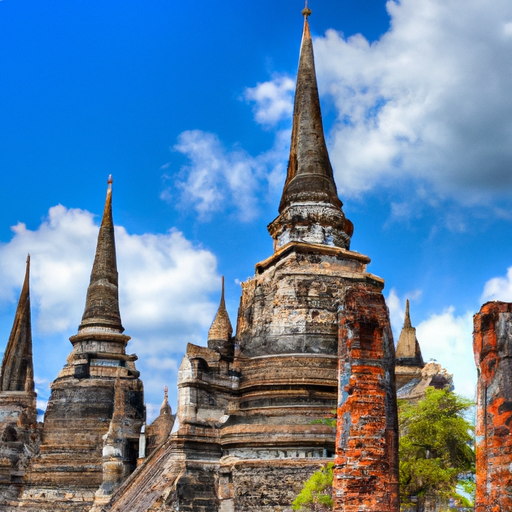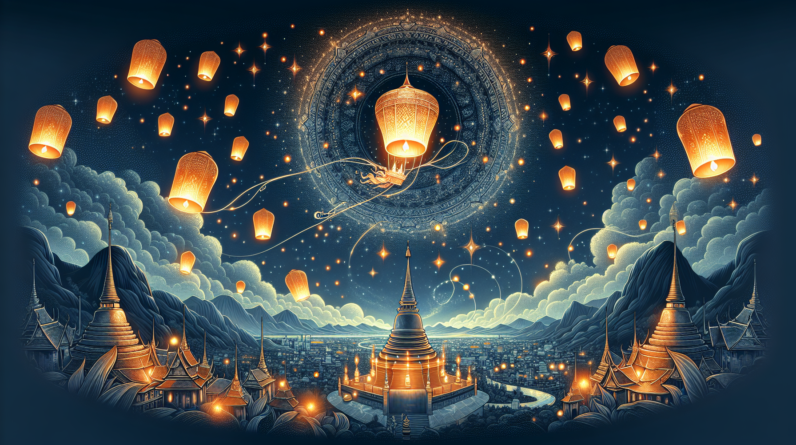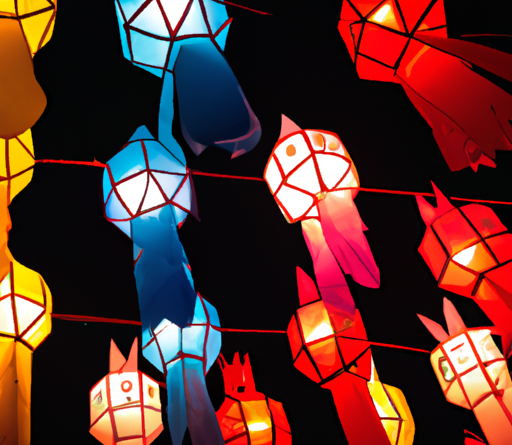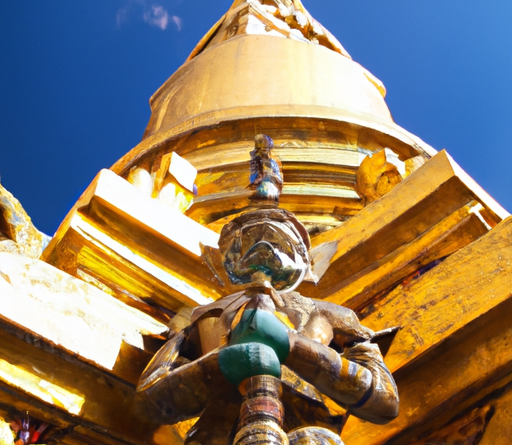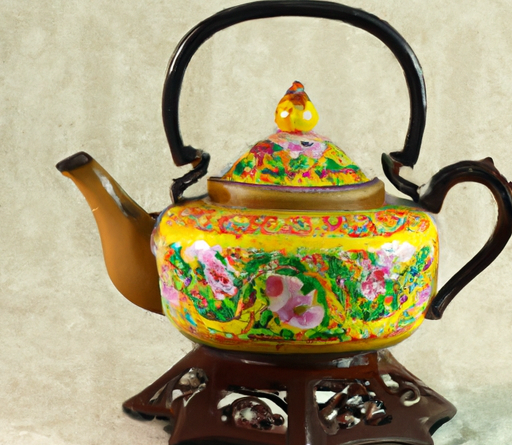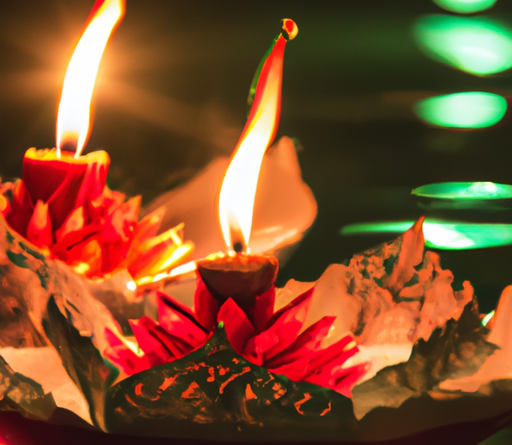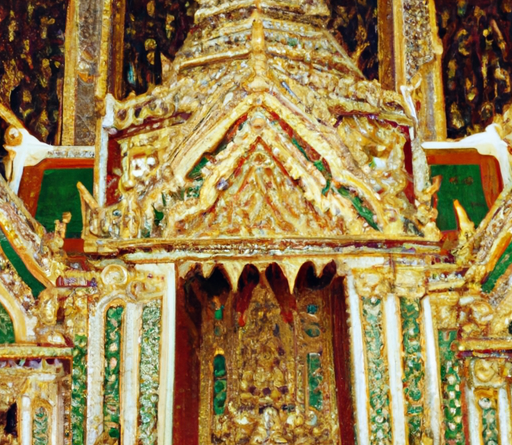
You can’t help but feel a rush of excitement as you approach Bangkok’s historical landmarks. The air is thick with awe and wonder, as tourists from all over the world gather to immerse themselves in the rich history and culture of this vibrant city. From the majestic Grand Palace to the sacred Wat Arun, every corner holds a story waiting to be discovered. It is no wonder that these historical landmarks attract such a massive influx of tourists – they offer a glimpse into the captivating past of Bangkok, leaving visitors spellbound and hungry for more. So grab your camera and get ready to embark on an unforgettable journey through time in this majestic city.
1. Grand Palace
1.1 History and significance
Located in the heart of Bangkok, the Grand Palace is a must-visit historical landmark that captivates tourists from all over the world. Its rich history dates back to 1782 when it was commissioned by King Rama I, the founder of the Chakri Dynasty. The palace served as the official residence of the Thai royal family for over 150 years and is still used for ceremonial events and important religious rituals today. Its significance lies not only in its architectural beauty but also in its deep cultural and historical roots.
1.2 Architecture and design
The Grand Palace showcases a stunning blend of traditional Thai, European, and Chinese architectural styles, making it a true masterpiece. Spread over an expansive area of 218,400 square meters, the palace complex consists of numerous buildings, halls, and pavilions stunningly adorned with intricate details, vibrant colors, and sparkling gold leaf. Each structure within the palace complex has its own unique style, showcasing the artistic prowess of Thai craftsmen.
1.3 Popular attractions within the Grand Palace
Within the Grand Palace complex, there are several attractions that draw tourists in awe. The most notable among them is the Wat Phra Kaew, also known as the Temple of the Emerald Buddha, which houses the highly revered Emerald Buddha, a symbol of Thailand’s spiritual and cultural heritage. The Phra Thinang Chakri Maha Prasat, an elegant reception hall, is another popular sight that showcases a harmonious fusion of Thai and European architectural elements.
1.4 Cultural and religious significance
The Grand Palace holds immense cultural and religious significance for the Thai people. It is not only a symbol of the monarchy but also a spiritual center. The Wat Phra Kaew houses the Emerald Buddha, which is highly revered by Buddhists around the world. The intricate murals and ornate decorations within the palace complex depict various stories from Thai mythology and history, providing a glimpse into the rich cultural heritage of the country.
2. Wat Phra Kaew (Temple of the Emerald Buddha)
2.1 History and legend of the Emerald Buddha
Nestled within the Grand Palace complex, the Wat Phra Kaew stands as a testament to Thailand’s profound spiritual heritage. The temple is home to the Emerald Buddha, a sacred icon that is believed to bring prosperity and good fortune to the country. Legend has it that the statue was discovered in the 15th century in Chiang Rai. Since then, it has been moved to different locations across the country before finally finding its permanent home at the Wat Phra Kaew.
2.2 Architectural features and design
The architectural splendor of Wat Phra Kaew is awe-inspiring. The temple showcases a perfect blend of Thai and Khmer architectural styles, with intricate details and stunning craftsmanship adorning every surface. The main attraction, the Emerald Buddha, is seated on a golden throne embellished with precious gems. The surrounding walls are adorned with breathtaking murals that narrate tales from Thai mythology and Buddhist scriptures.
2.3 Spiritual and cultural importance
The Emerald Buddha holds immense spiritual and cultural significance for the Thai people. It is believed that the statue has the power to protect the country and bring prosperity. The temple serves as a place of worship and pilgrimage for Buddhists, who come to offer their prayers and seek blessings from this revered icon. It is not only a religious site but also a cultural landmark that showcases the intricate craftsmanship and devotion of Thai artisans.
2.4 Experience of the Emerald Buddha
Visiting the Wat Phra Kaew and witnessing the Emerald Buddha is a truly enchanting experience. As you step into the temple, you will be greeted by the serene atmosphere and the beauty of the exquisite architecture. The vibrantly colored murals and the majestic presence of the Emerald Buddha create a sense of tranquility and spirituality. It is a place where you can immerse yourself in Thai culture, spirituality, and history all at once.
3. Wat Pho (Temple of the Reclining Buddha)
3.1 History and origins of Wat Pho
Wat Pho, also known as the Temple of the Reclining Buddha, is one of the oldest and largest temple complexes in Bangkok. Its rich history dates back to the 16th century when it was originally built as a center for education and traditional Thai medicine. Over the centuries, the temple has been expanded and renovated, becoming a significant religious and cultural institution in Thailand.
3.2 Magnificent reclining Buddha statue
The highlight of Wat Pho is undoubtedly the massive, gold-plated Reclining Buddha statue that measures a staggering 46 meters in length. This awe-inspiring statue symbolizes the passing of the Buddha into Nirvana. The sheer size and exquisite details of the statue, from its mother-of-pearl inlaid feet to its peaceful expression, leave visitors in awe. It is a sight that truly encapsulates the spiritual essence of Thai Buddhism.
3.3 Traditional Thai massage and education center
Wat Pho is not only a place of worship but also a center for knowledge and healing. It is renowned for being the birthplace of traditional Thai massage, and the temple complex houses a traditional Thai massage school where visitors can learn this ancient art of healing. The temple also served as an educational institution for various subjects, including literature, astrology, and meditation, making it an important hub of learning in Thailand’s history.
3.4 Beautiful architecture and tranquil atmosphere
Apart from the Reclining Buddha statue, Wat Pho’s architectural beauty is also a major attraction. The temple complex features a myriad of beautifully adorned stupas, shrines, and statues, making it a photographer’s paradise. The serene atmosphere, with the sound of chanting monks and the wafting scent of incense, adds to the tranquility of the surroundings. Exploring the temple’s vast grounds and intricate details is like stepping into a peaceful sanctuary.
4. Wat Arun (Temple of Dawn)
4.1 Inspiration behind the name
Wat Arun, or the Temple of Dawn, is an iconic landmark situated on the banks of the Chao Phraya River. The temple gets its name from Aruna, the Hindu god of dawn, symbolizing the belief that the first light of day shines upon the temple every morning. Its striking silhouette and intricate details make it one of the most recognizable landmarks in Bangkok.
4.2 Iconic prang and its intricate details
The centerpiece of Wat Arun is the towering prang, which stands at approximately 70 meters tall. The prang is decorated with thousands of colorful pieces of Chinese porcelain and seashells, creating an enchanting mosaic of vibrant colors. As you ascend the steep steps of the prang, you will be mesmerized by the intricate details in every nook and cranny. The view from the top offers a breathtaking panorama of Bangkok’s skyline.
4.3 Stunning panoramic views of Bangkok
One of the main reasons why tourists flock to Wat Arun is to enjoy the stunning panoramic views of Bangkok from its elevated position. Whether you visit during the day or at sunset, the view from the top of the prang is awe-inspiring. The breathtaking scenery of the Chao Phraya River, the Grand Palace, and the surrounding cityscape provides a unique perspective of Bangkok’s beauty.
4.4 Historical importance and cultural significance
Wat Arun is not only a visual masterpiece but also a site of historical and cultural significance. The temple has stood for centuries, witnessing the rise and fall of kingdoms and empires. Its architecture reflects a mix of Khmer and Thai styles, showcasing the cultural exchange between these two civilizations. Wat Arun is a symbol of Thailand’s rich heritage and a testament to the country’s deep-rooted religious and architectural traditions.
5. The Jim Thompson House
5.1 Life and legacy of Jim Thompson
Take a trip back in time and explore the fascinating story of Jim Thompson, an American businessman who played a pivotal role in revitalizing Thailand’s silk industry. The Jim Thompson House, located in the heart of Bangkok, was Thompson’s former residence and now serves as a museum dedicated to his life and the preservation of Thai art and culture. Thompson’s mysterious disappearance in the Malaysian jungle in 1967 only added to the intrigue surrounding his life and legacy.
5.2 Unique Thai-style architecture
The Jim Thompson House is a testament to Thompson’s love for Thai architecture and design. The complex consists of several traditional teakwood Thai houses, brought from different parts of the country and reassembled in Bangkok. The houses are intricately decorated with traditional art forms, from delicate wood carvings to exquisite murals. Thompson’s attention to detail and his passion for preserving Thai craftsmanship shine through every corner of the property.
5.3 Remarkable collection of art and antiques
A visit to the Jim Thompson House will leave art enthusiasts and history buffs in awe. The museum houses an impressive collection of Southeast Asian art, including ancient Buddhist artifacts, Khmer sculptures, and a variety of traditional Thai artworks. Thompson’s keen eye for beauty and his appreciation for local art is evident in the carefully curated pieces on display. It is a treasure trove that showcases the richness and diversity of Southeast Asian art and culture.
5.4 Magnificent silk industry and Thai craftsmanship
One of the highlights of the Jim Thompson House is its strong connection to Thailand’s silk industry. Thompson played a crucial role in reviving the dying silk industry and bringing it into the international spotlight. Visitors have the opportunity to witness the intricate process of silk production, from the cultivation of silk worms to the delicate hand-weaving techniques. The Jim Thompson brand is now synonymous with the highest quality Thai silk, serving as a testament to the skill and craftsmanship of Thai artisans.
6. Wat Saket (Golden Mount)
6.1 Historical background of Wat Saket
Perched atop a man-made hill, Wat Saket, also known as the Golden Mount, is a tranquil temple that offers respite from the bustling streets of Bangkok. The temple dates back to the Ayutthaya period and has since undergone several renovations and additions. Its historical background and serene surroundings make it a popular destination for locals and tourists alike.
6.2 Glorious chedi and panoramic view
The Golden Mount is crowned with a spectacular golden chedi, adorned with intricate details and offering panoramic views of the city below. To reach the top, you must climb a spiral staircase that winds around the hill, passing by serene Buddha statues and lush gardens. As you make your way up, the view gradually unfolds, revealing the city’s urban landscape and the vast expanse of the Chao Phraya River.
6.3 Religious festivals and ceremonies
Wat Saket is not only a place for quiet contemplation but also an active religious site, hosting various festivals and ceremonies throughout the year. One of the most famous events is the annual Temple Fair, held in November, where locals gather to pay their respects and enjoy the lively atmosphere. During this time, the temple is adorned with colorful decorations, and visitors can participate in traditional activities, such as releasing floating lanterns into the sky.
6.4 Connection to Thai history and Buddhism
Wat Saket’s connection to Thai history and Buddhism is evident in its architecture and cultural significance. The temple houses relics of the Buddha and other revered Buddhist figures, making it a sacred site for Buddhists. The serene environment and the peaceful atmosphere allow visitors to gain a deeper understanding of Thai religious and cultural traditions.
7. Wat Traimit (Temple of the Golden Buddha)
7.1 Discovery of the Golden Buddha
Wat Traimit, also known as the Temple of the Golden Buddha, is home to one of the most significant and captivating Buddha statues in the world. The story of the Golden Buddha begins in the 1950s when a plaster statue, thought to be made of ordinary materials, was accidentally dropped and revealed its true nature – a solid gold statue weighing over 5 tons. It is believed that the statue was covered in plaster to protect it from being looted during times of war and unrest.
7.2 Cultural and historical symbol
The Golden Buddha holds great cultural and historical significance for the people of Thailand. It is considered a symbol of prosperity, wealth, and good fortune. The statue represents the country’s resilience and the ability to withstand challenges. The discovery of the Golden Buddha also showcases the importance of preserving cultural heritage and the hidden treasures that lie within.
7.3 Importance of gold in Thai culture
Gold holds a special place in Thai culture, symbolizing wealth, beauty, and spirituality. The Golden Buddha reflects the reverence that the Thai people have for gold and its association with the divine. The statue’s shimmering golden surface and the meticulous craftsmanship involved in its creation highlight the importance of gold in Thai arts and crafts.
7.4 Unique structure and architectural style
Wat Traimit is an architectural marvel in itself. The temple combines elements of traditional Thai and Chinese architectural styles, creating a harmonious fusion. The striking facade and intricate details of the temple’s exterior set the stage for the awe-inspiring Golden Buddha that awaits inside. The blend of design elements, coupled with the cultural significance of the Golden Buddha, make Wat Traimit a must-visit destination for those interested in Thai history and spirituality.
8. Wat Benchamabophit (Marble Temple)
8.1 Exquisite marble used in construction
Wat Benchamabophit, popularly known as the Marble Temple, is renowned for its exquisite use of Carrara marble, imported all the way from Italy. The temple’s exterior walls and pillars showcase the beauty and elegance of this precious material. The white marble creates a striking contrast against the vibrant colors of the surrounding landscape, making it one of the most visually captivating temples in Bangkok.
8.2 Intricate architecture and decorative elements
The architectural beauty of Wat Benchamabophit is mesmerizing. The temple exemplifies the Rattanakosin style, characterized by a fusion of Thai and European influences. The graceful sweeping roofs, ornate gables, and intricate carvings showcase the mastery of Thai craftsmanship. Inside the temple, visitors will find a stunning collection of Buddha images, delicate murals, and intricate wood carvings that exemplify the artistic prowess of Thailand.
8.3 Spiritual and meditation center
Beyond its remarkable architectural features, Wat Benchamabophit serves as a peaceful haven for spiritual seekers. The temple complex provides a serene environment for meditation and contemplation, allowing visitors to find solace in the tranquility and spirituality of the surroundings. The tranquil gardens and lotus ponds further enhance the sense of calmness and serenity, inviting visitors to connect with their inner selves.
8.4 Unique blend of Thai and European influences
The Marble Temple stands as a testament to Thailand’s ability to embrace and adapt external influences while maintaining its cultural identity. The fusion of Thai and European architectural elements reflects the country’s openness to cultural exchange and its continuous evolution. Wat Benchamabophit serves as a symbol of unity and harmony, bridging the gap between different cultures and celebrating the diversity that makes Thailand unique.
9. Wat Suthat (The Giant Swing)
9.1 Historical importance and cultural heritage
Wat Suthat, home to the Giant Swing, is an iconic temple that embodies Thailand’s historical and cultural heritage. Built in the 19th century during the reign of King Rama I, the temple stands as a testament to the country’s deep religious roots and architectural splendor. The temple’s historical significance and cultural heritage make it a must-visit landmark for those interested in Thai history and Buddhism.
9.2 Giant Swing ceremony and religious rituals
The Giant Swing, situated in front of Wat Suthat, was once used in an ancient Brahmanic ceremony known as the Swing Festival. During this ritual, young men would swing from the giant swing to reach a bag of gold suspended in mid-air, symbolizing their bravery and the pursuit of prosperity. Although the Swing Festival is no longer performed, the Giant Swing remains an iconic symbol of Thailand’s cultural and religious traditions.
9.3 Beautiful murals and architecture
Wat Suthat is renowned for its beautifully preserved murals that adorn the walls of the temple’s assembly hall. These intricate paintings depict scenes from Buddhist scriptures, Thai mythology, and historical events, offering a glimpse into Thailand’s rich cultural heritage. The temple’s architecture, with its elaborately carved details and serene atmosphere, provides a serene backdrop for contemplation and appreciation of the country’s artistic legacy.
9.4 Connection to Hindu mythology and Brahmanism
Wat Suthat’s historical roots are deeply intertwined with Hindu mythology and Brahmanism, as evident in the temple’s architectural details. The intricate carvings and sculptures depict Hindu deities and mythical creatures, reflecting the cultural fusion that has shaped Thailand over the centuries. The temple’s seamless blend of Buddhist and Hindu influences is a testament to the country’s syncretic religious practices and the harmonious coexistence of various belief systems.
10. Vimanmek Mansion
10.1 World’s largest teakwood mansion
Vimanmek Mansion is a magnificent architectural gem that holds the distinction of being the world’s largest teakwood mansion. Built in the early 20th century by King Rama V, the mansion showcases the opulence and grandeur of Thai royal residences. It served as a summer palace for the king and now functions as a museum that allows visitors to experience the regal lifestyle of the Thai monarchy.
10.2 Impressive collection of royal artifacts
As you explore the Vimanmek Mansion, you will be treated to a vast collection of royal artifacts and antiques. The mansion houses a remarkable assortment of furniture, artwork, costumes, and personal items that once belonged to the royal family. From intricately carved wooden furniture to delicate porcelain and glassware, the collection offers a glimpse into the refined taste and discerning style of Thailand’s royalty.
10.3 Historical significance and royal residence
Vimanmek Mansion carries immense historical significance as it was once the primary royal residence of King Rama V. It reflects the king’s vision for modernizing Thailand while maintaining its cultural traditions. The mansion’s architecture, blending traditional Thai elements with Western influences, symbolizes the king’s embrace of progress without compromising the country’s rich heritage.
10.4 Preservation of Thai architectural heritage
The Vimanmek Mansion stands as a testament to Thailand’s commitment to preserving its architectural heritage. The mansion’s restoration and conversion into a museum have helped protect and showcase the beauty of Thai craftsmanship. By opening its doors to the public, Vimanmek Mansion allows visitors to appreciate the intricate details, elegant design, and historical value of Thai architecture while gaining a deeper understanding of the country’s royal history.
